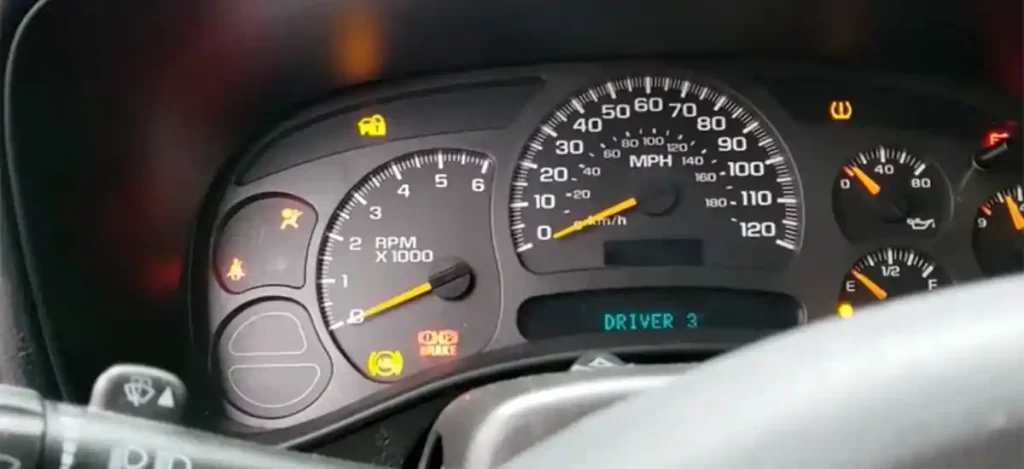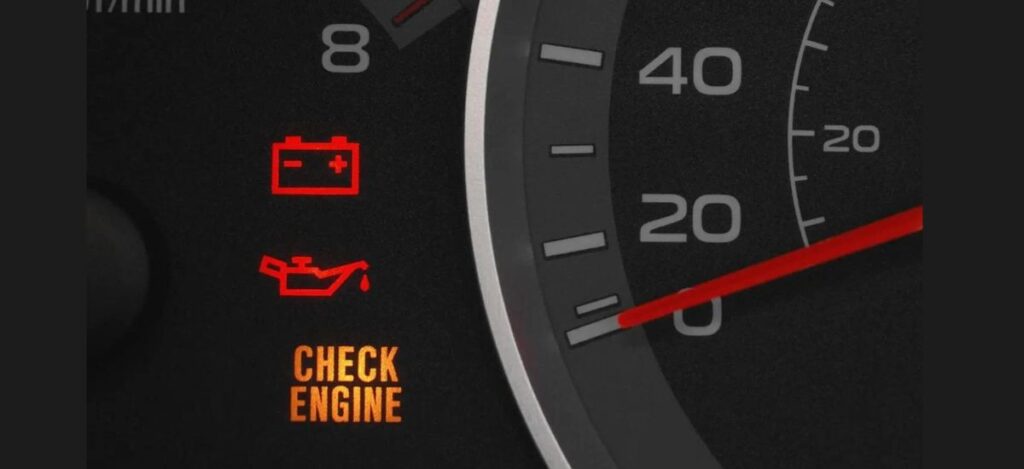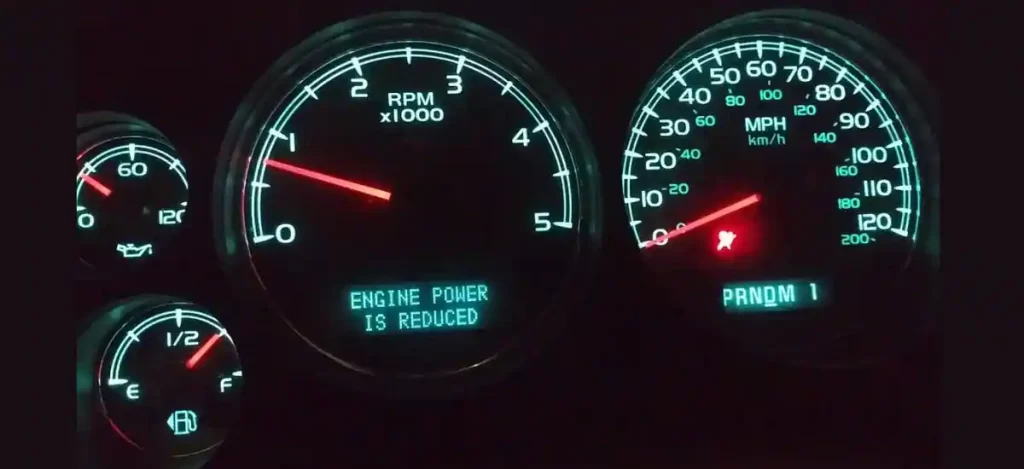If your car’s dashboard displays the phrase “reduced engine power,” it signifies that it can no longer perform at its maximum efficiency.
There are a number of potential causes for the low engine power error. If your fuel injectors, oxygen sensor, spark plug, exhaust system, turbocharger, or supercharger have failed, your exhaust system is blocked with carbon, your fuel injectors are malfunctioning, and your spark plug is not functioning correctly, or your ignition wiring is damaged.
If you drive for an extended period of time with an overheated engine, the error may also appear. Your automobile should continue to operate at a lower power level while the problem notice is shown.
Although you will notice a slight reduction in acceleration, you run the danger of burning your engine and doing more extensive damage if you disregard this warning and keep driving.
Drive your automobile as quickly as you can to a repair or dealership if you are unable to resolve the issue yourself.
What Does Reduced Engine Power Mean?
Since you nearly always have your automobile with you, you are most familiar with how it operates normally.
Even if there aren’t any warning lights on your gauge cluster at the moment, your familiarity with it will likely be the greatest clue if you’re using less engine power.

But in case you miss it, your automobile will alert you to any issues. Since not everyone is an expert who is aware of what to watch out for, Your car’s computers and sensors are equipped with a backup setting known as “limp mode” or “safe mode,” which automatically reduces your car’s power in an effort to prevent engine damage.
Depending on the vehicle, this backup system might limit your speed, disable auxiliary components, or even entirely immobilize your car.
Most of the time, if you’re going somewhere and anything goes wrong, your car will give you just enough power to travel to a repair or back home.
The decreased engine power light turns on when the car’s computer notices a problem with any of the components that ensure that the engine runs smoothly, including the oxygen sensors, throttle sensors, and airflow sensors.
This light is not always present in the vehicles that do have this warning system, nor is it present in all of them. If your car has a screen in the gauge cluster, it could in certain cases be a warning that is shown there.
This light is often seen on General Motors cars. Other cars, particularly high-end and powerful ones, lack this warning sign but do offer a “limp home” function.
If your car is in “limp mode,” as described above, it should be pretty clear, especially if the check engine light is on and it has significantly reduced power and functionality.
What Are The Main Causes Of Reduced Engine Power?
The low engine power light may illuminate a number of causes, all of which should raise suspicion. Using a high-quality scan tool should make it quite simple to determine the specific source of the problem after scanning your car.
1. Engine Oil Level is Low- Your engine power light will illuminate if the oil level is low, signaling that your automobile needs additional oil.
You should take the automobile to a repair and ask them to check your oil level because this might be quite unsafe for a variety of reasons. They can top off the oil for you if the level falls below the safe limit.
2. Worn or Faulty Spark Plug- According to the majority of automotive specialists, your car’s engine power light may illuminate if the spark plugs are damaged or worn out.
To avoid this, you should get the spark plugs replaced as soon as you can.
Guide On: What Does It Take To Drive With A Bad Catalytic Converter?
3. Faulty Distributor- Your dashboard’s engine power light may illuminate if your distributor is malfunctioning.
To resolve this problem, you would require a new distributor as well as perhaps other components, such as spark plugs, if they were harmed by your defective distributor.
4. Connectors- Your dashboard’s engine power light may illuminate if the coil wire is loose. To resolve this problem, you must tighten the connectors on the wire at both ends and check it for kinks that might result in short wiring.
You should mend any loose wires as soon as possible since they are extremely harmful to a variety of reasons.
5. Faulty MAF Sensor- Your dashboard’s engine power reduction indicator may illuminate due to a malfunctioning mass airflow sensor.

The electronic control unit (ECU) is informed of the input by the MAF sensor, which gauges the airflow entering the car’s engine.
The air-to-fuel ratio is then adjusted by the electronic control unit ECU using this information to ensure that your automobile operates smoothly and at its best. For this reason, it’s crucial to swap out a bad MAF sensor as soon as you see the engine power light on your dashboard.
6. Loose Fuel Cap- The activation of your car’s engine power light is frequently caused by a loose gasoline cap. You should be good to go after tightening the fuel lid on the gas tank to resolve this problem.
It is in your best interest to replace the gas cap if there is an issue since a malfunctioning one might admit impurities that could harm your fuel lines.
7. Car TAC System- In many current autos, a throttle actuator control system is featured. Timing and fuel injection control are its primary responsibilities. It might malfunction due to an issue with the electronic fan clutch.
The automobile power light will turn on if there is a problem, which might harm your engine. You must change the broken TAC system to resolve this issue.
8. Oxygen Sensors- Car oxygen sensors play a crucial role in determining how much fuel should be injected into your engine by measuring the amount of oxygen in the exhaust.
The decreased engine power light will turn on if an oxygen sensor isn’t working properly. It is advised that you replace your oxygen sensors as soon as you become aware of this issue.
9. Throttle Body Issue- The butterfly valve that opens to let air into the engine is often close to the throttle position sensor inside the throttle body.
The computer uses this sensor to determine how much to open the valve and release a corresponding quantity of air into the engine based on the location of the accelerator pedal when you press the gas pedal.
As air enters the engine, this sensor also assists with gearbox shifting. The car will enter limp mode and turn on the decreased engine power light if this sensor can’t interact with the computer systems in order to control engine revving.
How To Bypass Reduced Engine Power?
The next section provides detailed explanations of many methods you may use to get around lower engine power.
1. Check Catalytic Converter
When you have diminished power, start by checking your catalytic converter. When an issue with the converter is detected by the OBD monitors, the engine power is decreased to make up for what is thought to be a probable issue.
By simply replacing your catalytic converter, you may overcome decreased engine power. Even while it may seem like an unneeded and costly procedure, it is worth it to rule out any potential problems.
2. Clean Air Filter
The intake system of your automobile is in charge of bringing in additional oxygen, which the engine can use to burn gasoline.
Power will be reduced if oxygen cannot enter because of oil buildup on the valves or weakened seals. The intake manifold may be cleaned by simply opening it up and removing the dirt.
3. Check ECU
Your car’s electronic control unit, or ECU, employs a variety of sensors and monitors to determine how best to distribute electricity. Reduced power will be experienced when one of these sensors is malfunctioning, though.
By just changing its firmware or replacing the ECU entirely, you may get around decreased engine power using the ECU.
4. Check Sensors
One of the most crucial actions to do if your power is being lowered is to check your sensors. The ECU makes power adjustments as a result of receiving information about the car’s systems from sensors including oxygen, mass airflow, and manifold absolute pressure.
During this procedure, if a sensor malfunctions, it will convey inaccurate data and affect how your engine performs. When you notice a decrease in engine power, you should repair any broken sensors to rule out any other possible problems.
5. Repair Exhaust Leaks
You most likely have some exhaust leaks if you are seeing a loss of power. In order for your vehicle to operate effectively, the exhaust system is made to manage and release the extra pressure that a car’s engine generates while it is operating.
Rust or damage-related flaws in the system will let the pressure out and result in less power. Using a soapy water solution, you may quickly check your system for leaks.
Bubbles will indicate to you where potential faults are; make careful to find them and fix them right away to prevent more performance difficulties for your automobile.
6. Check Electrical Wiring And Cables
If the engine in your automobile isn’t producing as much power as it should, you probably have an electrical issue. In order for the ECU to know what to do, it needs signals from the battery and other components.
If there are any defective connections or wiring, this might affect how the automobile operates. All of the wire connections should be checked, and any cables that are broken should be replaced.
What Should I Do If The Reduced Engine Power Light Comes On?
If the engine seems to be running badly or enters a limp mode in a vehicle without a decreased engine power warning light, you should try to identify the issue as quickly as you can. If you suspect or believe an issue may occur, you may even scan your car beforehand.

Your car is designed to limit the power of its driving systems when it notices an issue with the engine’s reduced output for a cause. A car must be driven at least sometimes until the issue is fixed. Otherwise, the damage might happen, necessitating costly repairs.
Just keep in mind that problems with one system only need to arise once before they affect other systems as well. Other error lights in the gauge cluster may also illuminate in response to the same fault code that activates the low engine power indicator.
Also Read: Do You Know How Many Volts Are In A Car Battery?
What Should I Do To Fix This?
Taking your automobile to a nearby auto repair shop and having the engine control unit properly examined to identify and rectify the issue is the best option to resolve “Reduced Engine Power.”
Using an OBD II scan tool or other standard tools, they will search the car. If they employ a top-notch scanning approach, they will unquestionably be able to locate the proper area. Try to fix these issues yourself if you can, or go to digital platforms for assistance.
FAQs
1. Can I drive my car if it says engine power reduced?
The GM Reduced Power Mode may prevent your car from accelerating. Even if power isn’t instantly lowered, the next time you try to drive the automobile, performance could be constrained.
In certain cases, the PCM may actually stop supplying gasoline to the engine, rendering the car incapable of being driven.
2. How much does it cost to fix a reduced engine power?
Reduced engine power may cost between $5 and $2,000 to correct, depending on the type of issue you are experiencing.
It will only cost you $5 to change an air filter is one that is clogged and results in lower engine power mode. However, a defective catalytic converter would cost you roughly $2,000 to replace.
3. How do I reset my reduced engine power light?
Resolving the root cause is the only method to successfully reset the low engine power indicator.
The low engine power indicator often disappears after a given amount of driving.
Read More: How To Start A Car With A Bad Starter?

